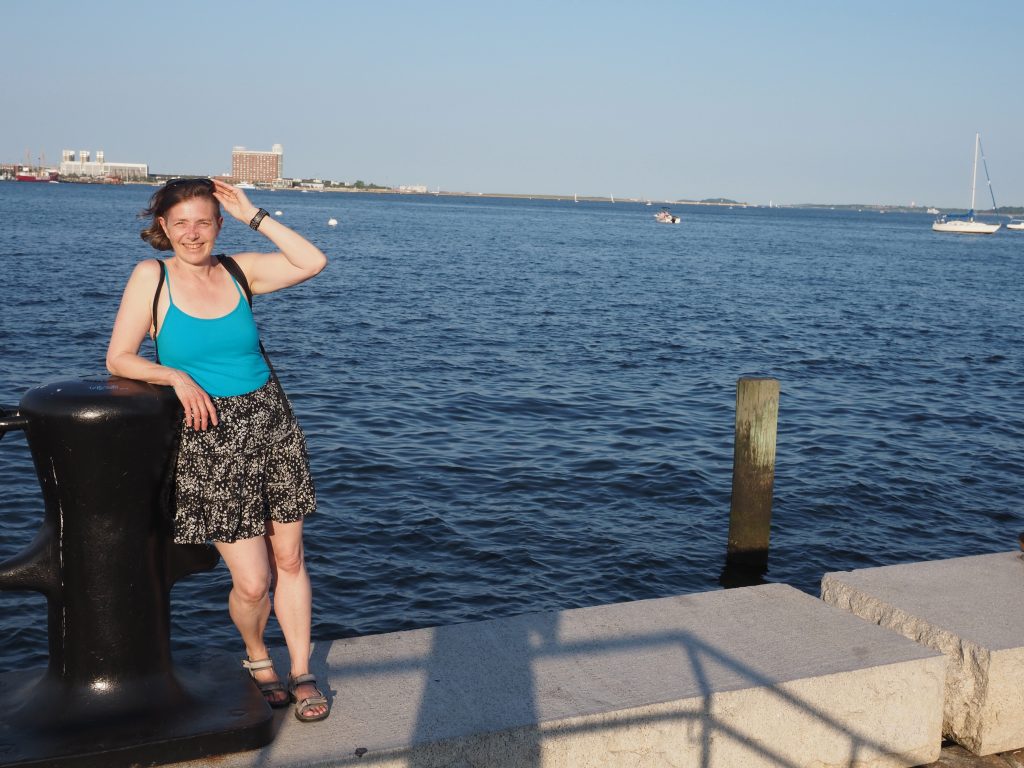Today was our Museum of Fine Arts day. I knew-at least in theory-about the size and caliber of this museum, so this was the only planned thing for today, with advance tickets and “timed entry” at 10 am for their big draw right now: a large exhibit on Hokusai and his influence. Good decision!
It was another gorgeous day (starting in the 60s at 9 am!) and so it was actually lovely to trek to the museum on foot–about 45 minutes (a little over 2 miles), mostly through the parks and along the Commonwealth Mall that we had already partly walked yesterday. We saw the three women of the Boston Women’s Memorial again and they are growing on me!
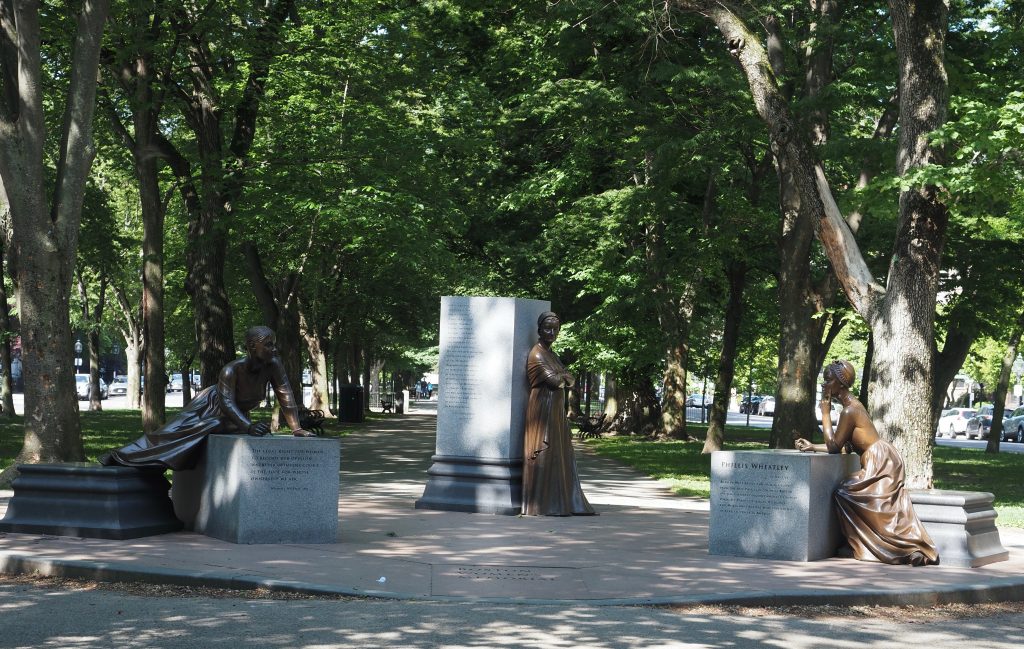
The shade was again lovely, and the last part of our walk through slightly more modern area felt oddly “at home” but also too quiet, until we realized we were walking right along the edge of the campus of Northeastern University, which had graduation just this last week. So a campus without students on a Sunday. No wonder it felt deserted but also so familiar.
When we got to the MFA Boston just before opening time, there were already people being shepherded into two lines, and we waited a few minutes until we were let in with our e-tickets, and headed as directed to the Hokusai exhibit. That was pretty crowded, but also quite interesting. I know about Japanese art primarily because and when it influences European art (drawback of my VERY Western training in art history), but since Hokusai and the ukiyo-e print style he mostly worked in are at the center of this influence, I had a lot to connect to. They had a whole room dedicated to various interpretations of “The Great Wave” (including a lego version and a GIGANTIC woodcut by a German print artist, Christiane Baumgartner). But I also learned that there was really nothing particularly special to this print, just one among the 36 (actually) 46 views of Mount Fuji that it was part of, when Hokusai first published the book with those prints. We also found out that he has animal and flower prints, and did illustrations of novels and ghost stories that were very story-oriented and clearly had an influence on the development of modern manga. It was a fun exhibit, but frankly had not nearly enough information about the printing techniques that were used. I felt that was really missing. All prints seemed to have a hand-colored element but I was unsure how that came in and why the woodcuts were always enhanced that way.
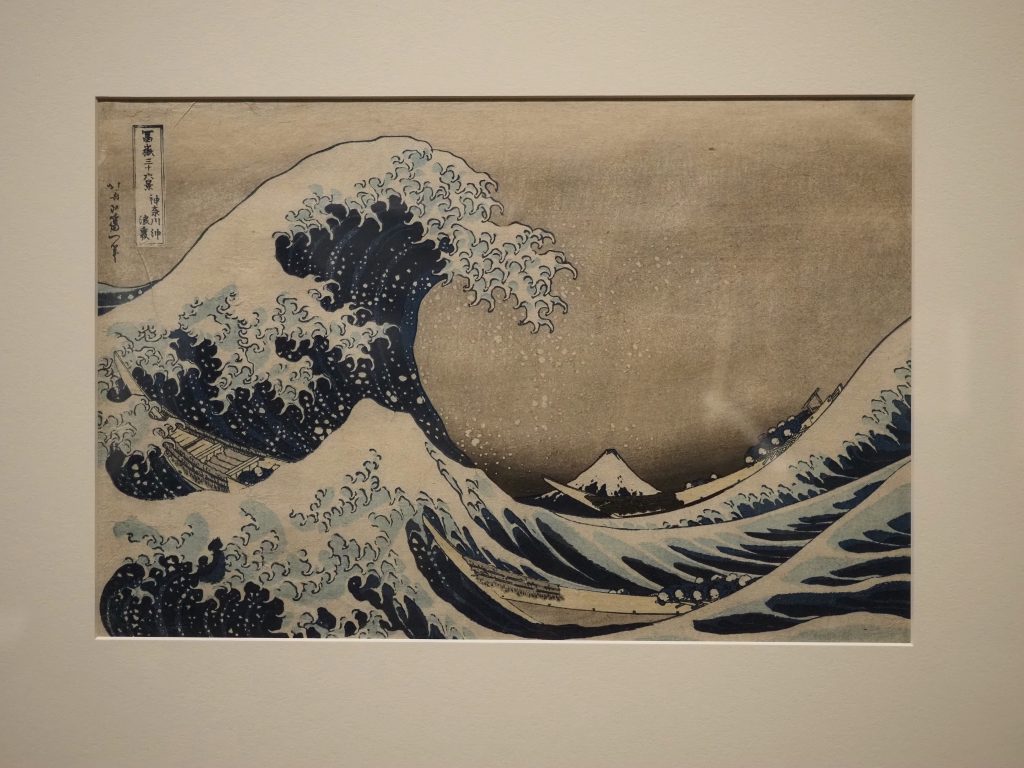
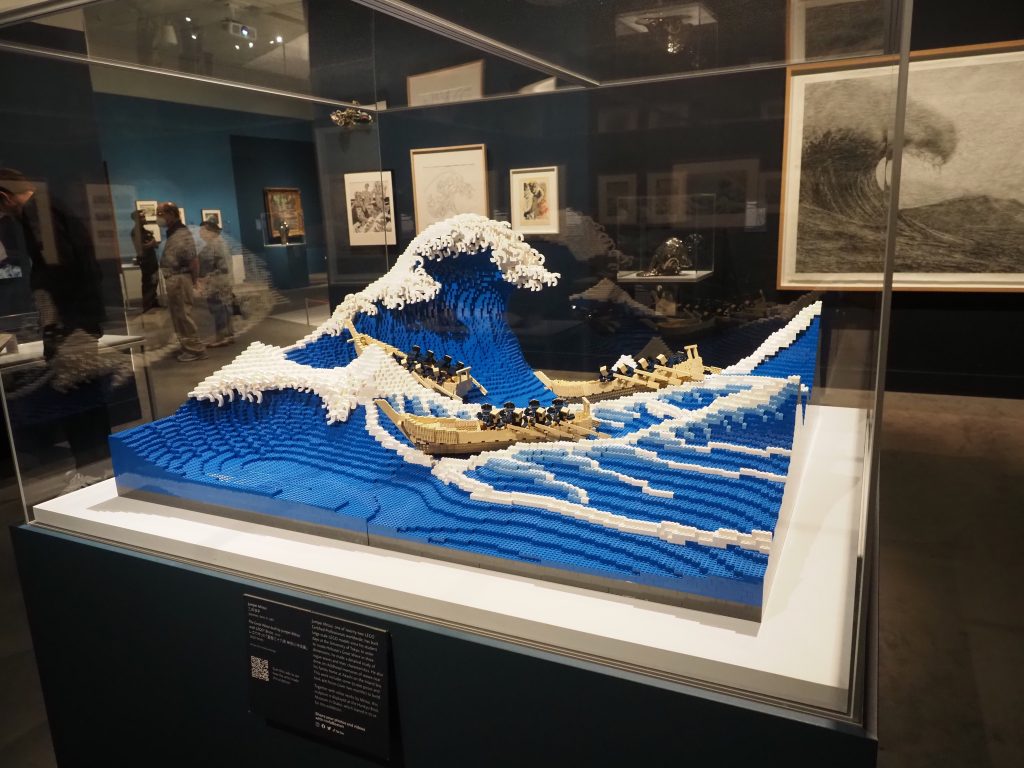
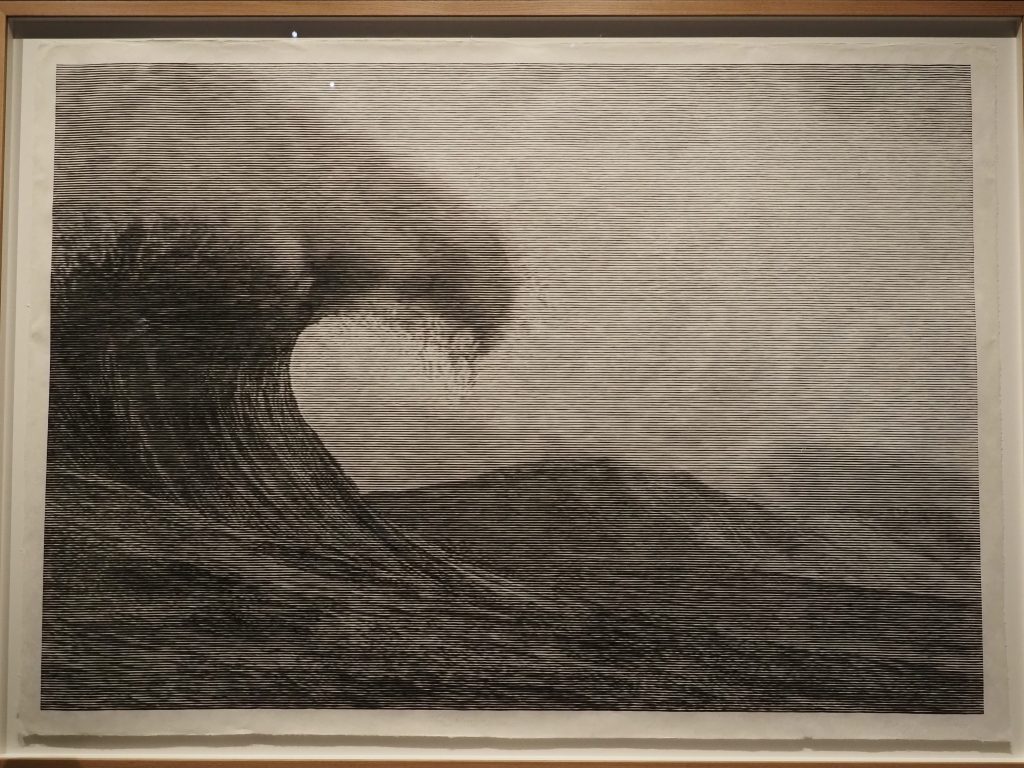
We then checked out the rest of the museum, including several other special exhibits, several of which focused on African American artists–some of whom I had studied and others that were new to me. Most impressively, an exhibit on the enslaved potters of Edgefield, South Carolina, among whom “Dave the Potter” (sometimes problematically known as “David Drake,” i.e. by the name of his enslaver) is the most famous and was represented by many of his enormous (and gorgeous) pots. Around the time when these were made in the 1850s, a new style of small jug with a face also emerges, possibly through renewed African influence that came into the country in 1858 when Africans were smuggled into the US, and those “face jugs” were fascinating. The exhibition also included “modern answers” to the work of these potters (in various ceramics factories in that area, where the clay was very good), and I was pleased to see that two works by Simone Leigh, who alluded to these artists with her gigantic jugs with cowrie shells and eyeless faces, were part of this modern work.
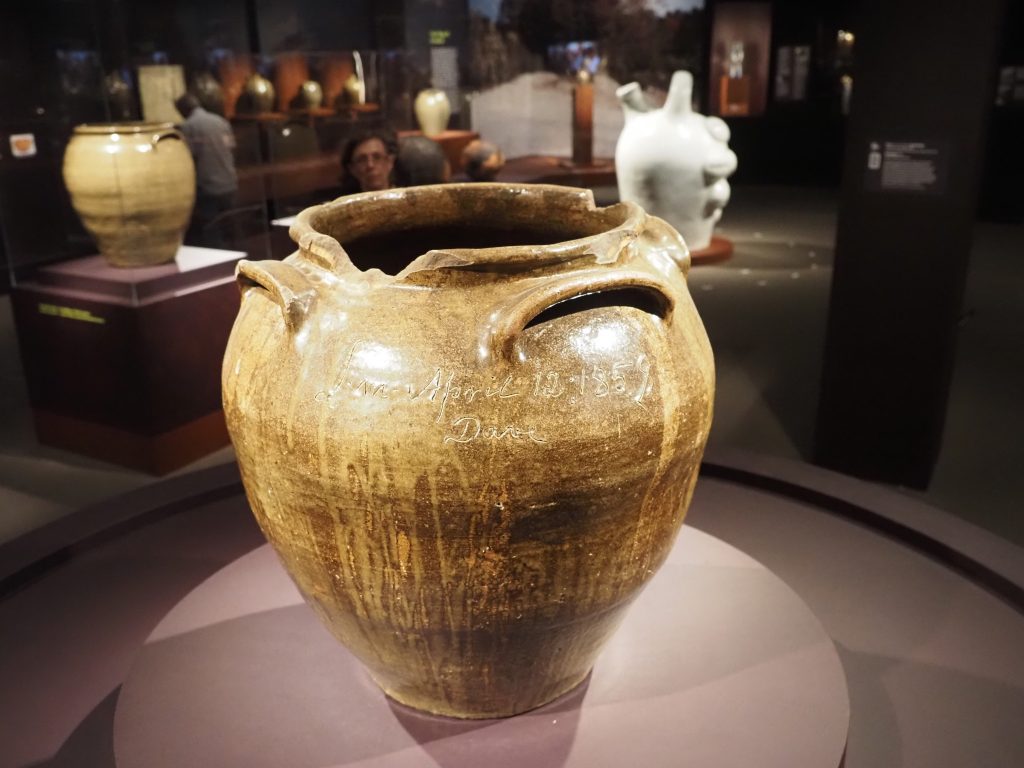
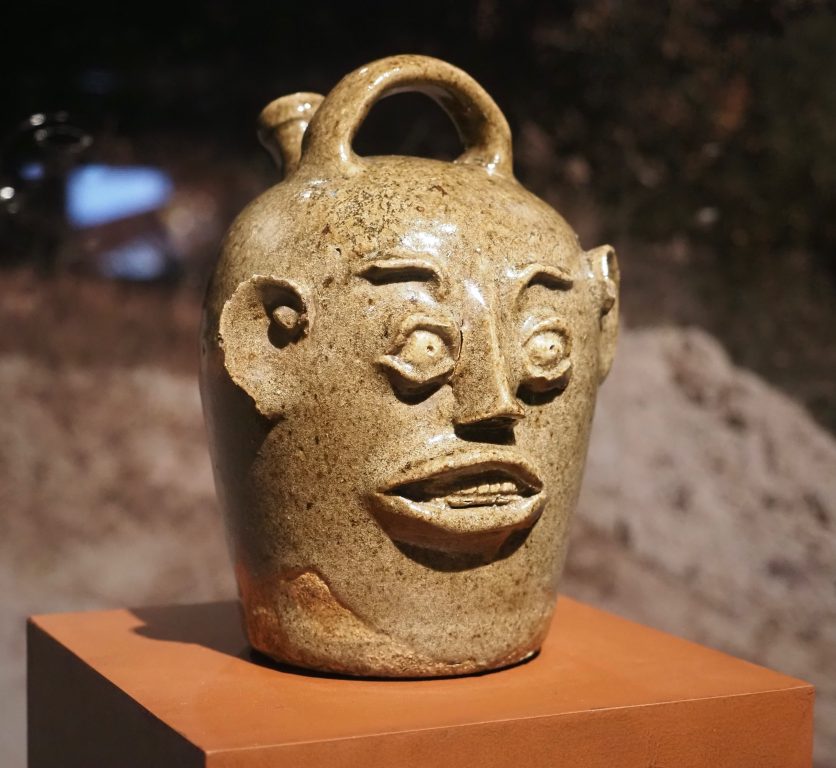
All in all, the museum did quite well with putting the occasional contemporary work alongside older art to create a contrast or to point to what was missing because there were so few known and “canonical” minority artists, and because Blacks and Indigenous people were so rarely portrayed in American art before the twentieth century. They also referred to artists not as “unknown” but as “formerly known,” which I thought was thought-provoking and useful. But all told, it is still a VERY canonical famous Western / famous US-American art museum, and they also for the most part sidestepped the question of how they got their nonwestern artefacts (Egyptian sculpture, Greek vases, Islamic carvings, etc. etc.). That said, there were so many world-famous, in-every-art-history textbook pieces everywhere. I stood for a while in front of Turner’s Slave Ship, inspired by the sinking of the Zong, which is the cover image for the textbook in our Western Art History textbook but has the strange feature of metal shackles that seem to float in the water (made fun of by Mark Twain).
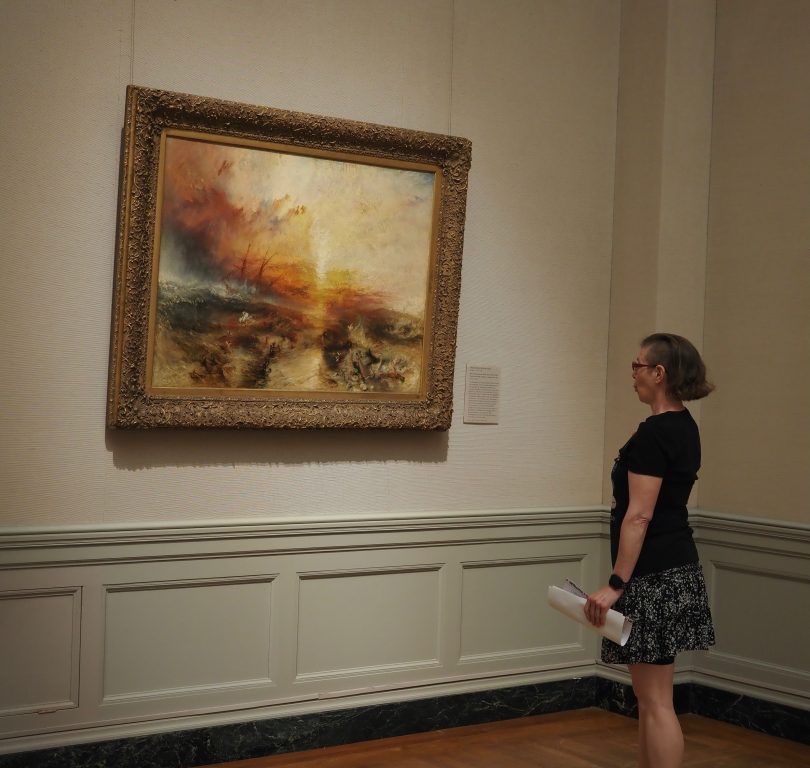
Mark took many photos for me, so picking just a few is hard. Here are the things that struck me most: Lots of American art from the 19th century that I know quite well thanks to my classes with Wendy Katz: Unsurprisingly, there was the sizable collection of Copley’s portraits of early Bostonians, including his famous Boy with a Flying Squirrel (the boy was his half-brother), and also his equally famous but also quite ridiculous Watson and the Shark (there is a long backstory and amazing scholarship about this one, but I cannot get over the fact that the shark has LIPS).
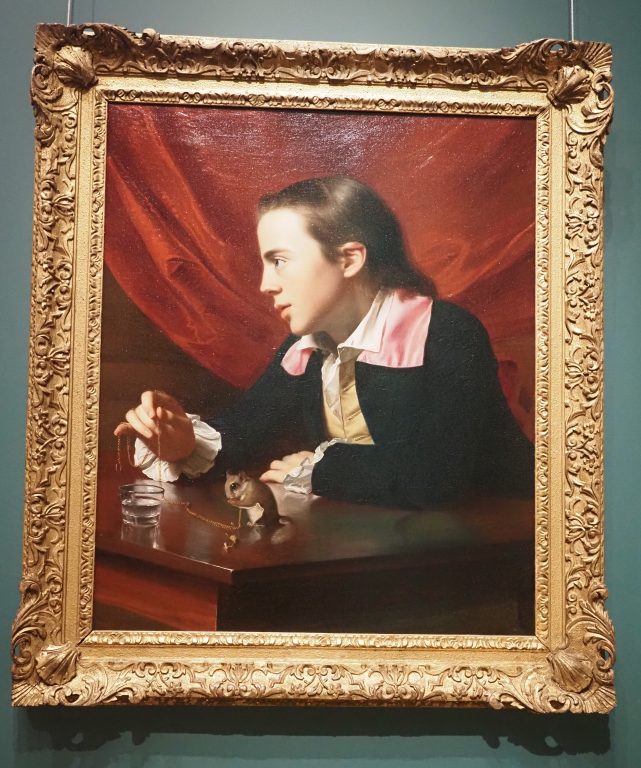
Likewise, there was a room full of John Singer Sargent’s stunning society portraits–but he also created the murals for the rotunda of the museum, and they had a deeply moving sketch/”pre-painting” of one of his main models for the mural, a Black hotel employee, Thomas McKeller, who was invariably “whitened” in Sargent’s actual murals.
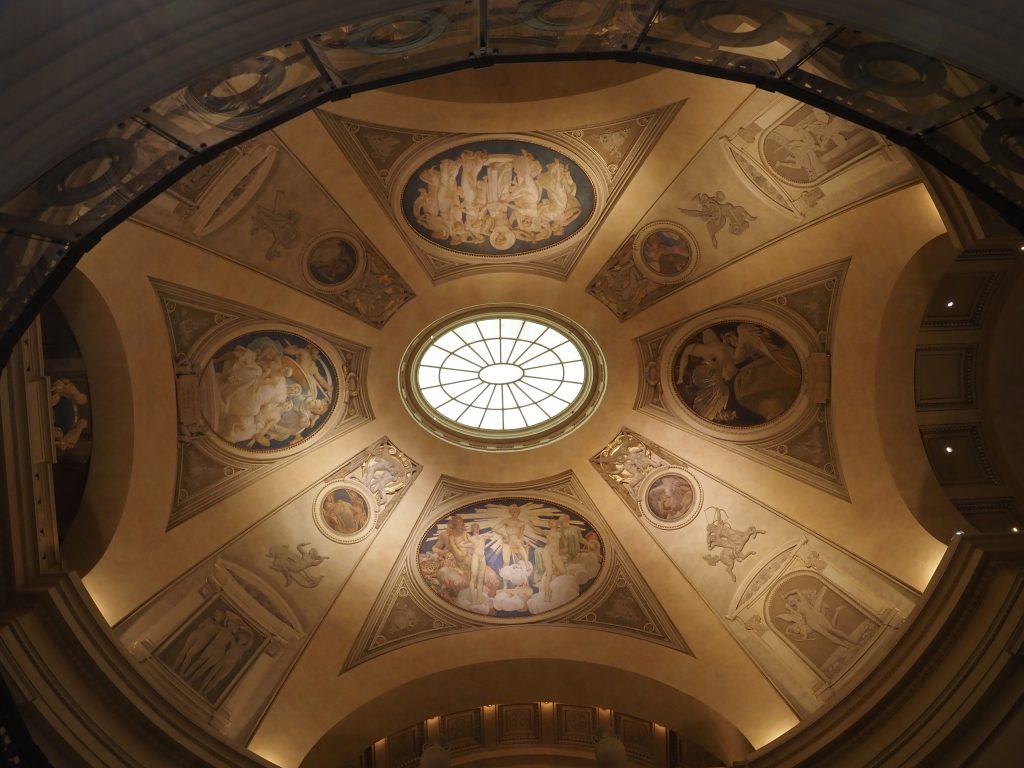
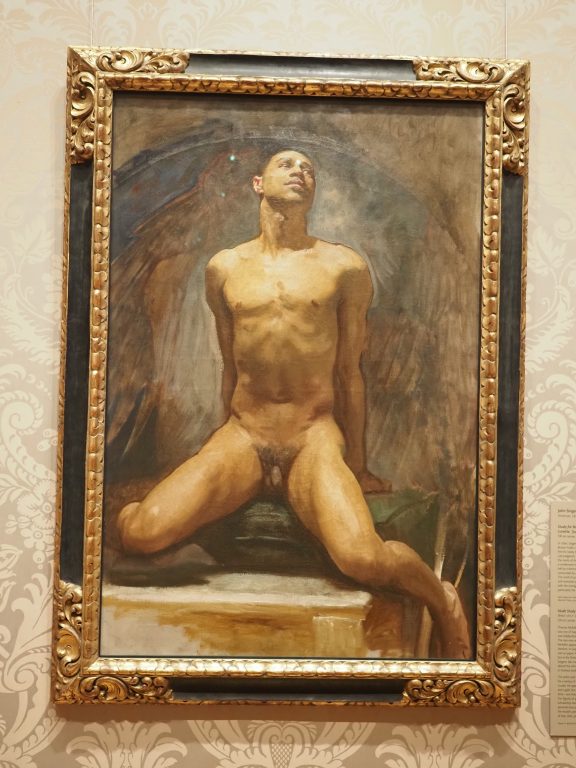
I also got to see some work by sculptors that I know lots about, but whose works I had never seen in person: for the 19th century, Harriet Hosmer and William Wetmore Story; for the 20th, especially the Black sculptors Augusta Savage and
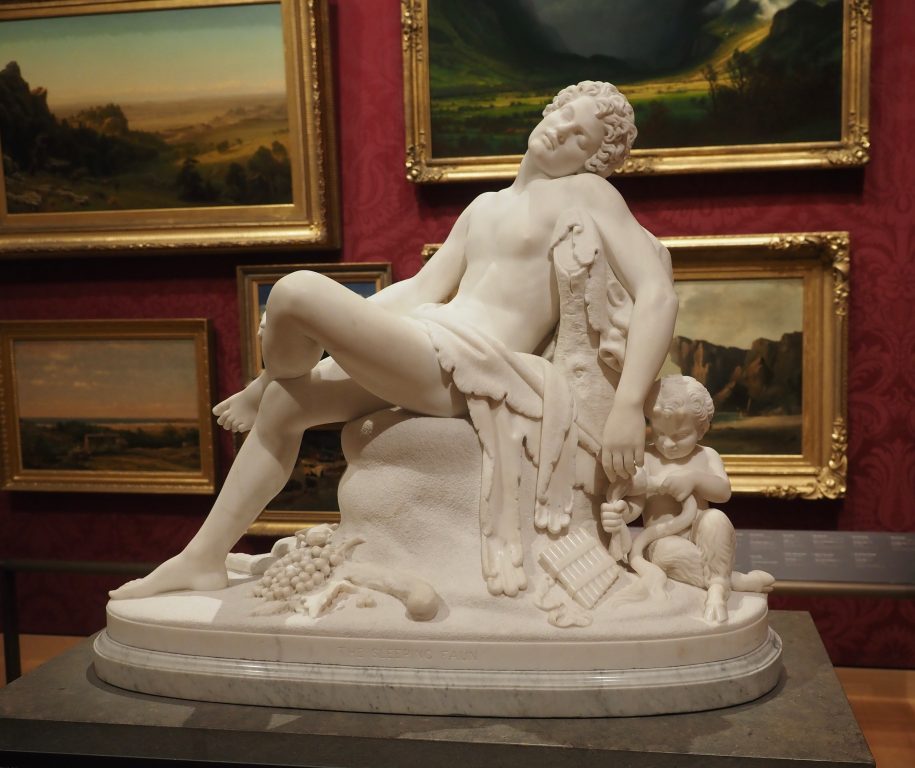
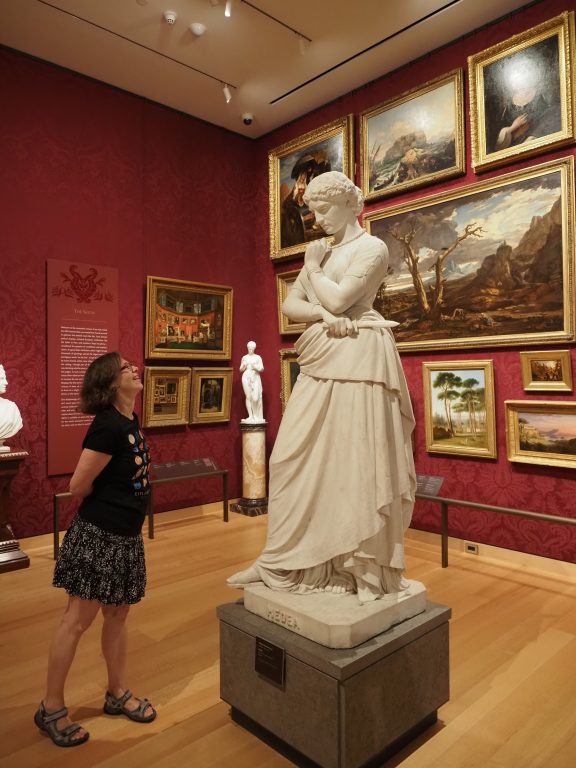
who is about to kill me with her dagger.
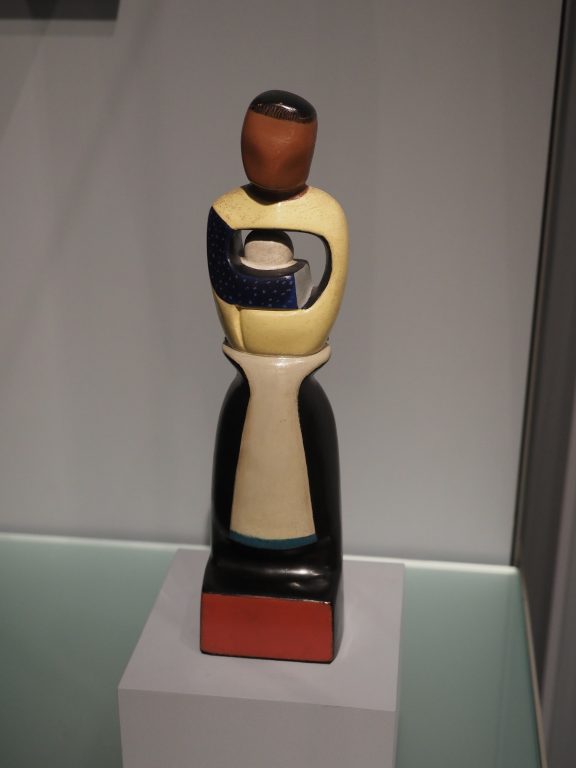
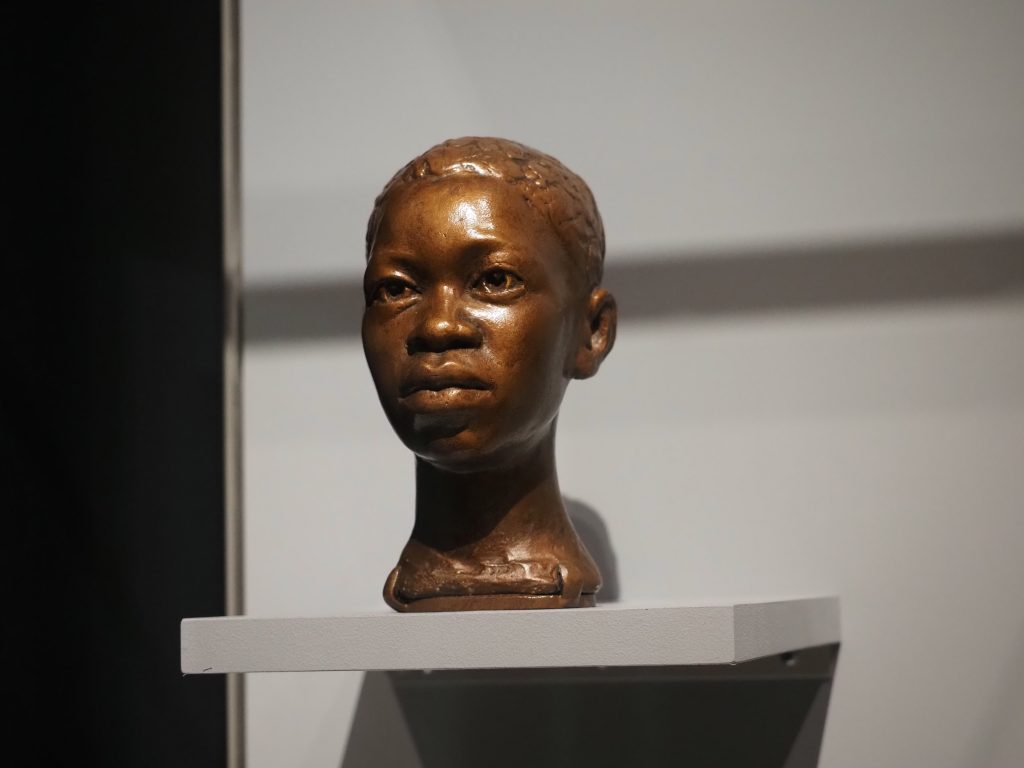
The European and ancient works were less exciting to me, just because we have seen so much of them in Europe (we actually skipped the Italian Renaissance!). But the Museum has a very high-quality sampling of everything. And some things truly surprised me–I had not expected to see the famous and especially rare “bilingual” vase here that shows the same scene of Ajax and Achilles playing dice once in red-figure, once in black-figure, and there were some early early Greek artworks that were much much smaller than I had thought. The Mantiklos Apollo, an archaic Greek figurine, was no bigger than my hand!
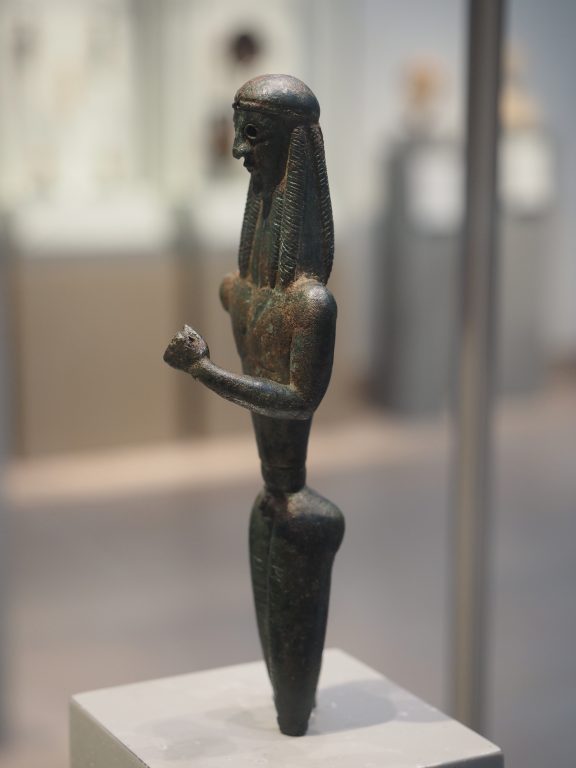
We did spend a total of 5 hours in the museum, and even so, we did not “cover” everything. But we did take some time out for a simple salad lunch in the beautiful open courtyard, with lots of shade, and we had a really good time all around.
Then we walked through another park area (part of Fenway, but not quite the baseball stadium) back to the Charles River esplanade, looked across at Cambridge (but decided that we did not need to see more campuses–MIT and Harvard are right across). Instead, after stopping for another round of ice cream–how could we not?–we sat on a bench by the river and watched people enjoy the glorious weather as much as we did (it climbed into the 80s this afternoon). After short stop at our quarters, we went to the harbor area around the Boston Aquarium (only about a mile from here), where there is a lovely foot path around along all the piers. The open water, the boats, the seagulls, the many lovely people milling around–it was a great way to wrap up the day. We found a place with outdoor seating to split a pizza and a caesar salad, and that was the perfect way to end the day. We had been walking lots (about 12 miles again) and were ready to call it a day!
